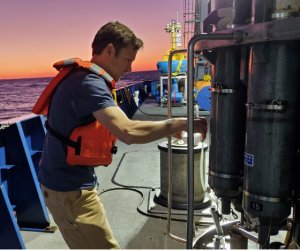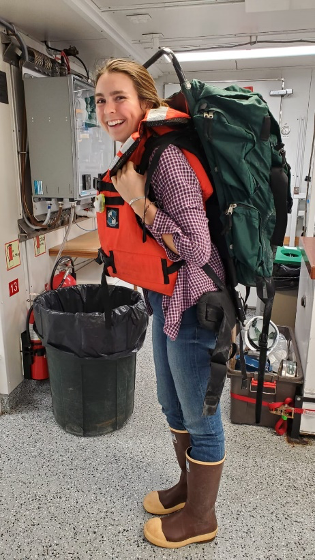More Than Just Moorings
People often wonder if we stand watches on our cruises – work in shifts 24 hours a day. Because our OOI work is primarily deploying and recovering moorings, the majority of our work happens during daytime when we have sufficient light. Overnight activities include surveys of the Pioneer Array region using ship’s sensors and holding station at mooring sites to provide comparisons of ship and buoy sensors. However, not every night is booked with OOI activities, so we will often allow other researchers to join us who can do operations at night, and make good use of the R/V Neil Armstrong’s capabilities. One group that often joins us on Pioneer cruises is the NES-LTER group at WHOI. The LTER (Long Term Ecological Research) Network consists of 28 research programs. The Northeast U.S. Shelf (NES) site stretches from WHOI’s Martha’s Vineyard Coastal Observatory (MVCO) to the OOI Pioneer Array, and is one of the few marine LTER sites. Led by Dr. Heidi Sosik, the NES-LTER group is interested in understanding how planktonic food webs are changing on the Northeast U.S. Shelf.

Brett Longworth pumps distilled water through the CTD rosette before doing a CTD cast. Photo: Taylor Crockford©WHOI.

Diana Fontaine, URI PhD candidate, gets ready to bring bottles to the bow for net primary production incubation experiments. Photo: Taylor Crockford ©WHOI.
Joining us on the Pioneer 17 Leg 2 cruise are Taylor Crockford (WHOI), Diana Fontaine (URI) and Brett Longworth (WHOI). They have instruments connected to the ship’s underway seawater system, so they are constantly making measurements of the surface water. They also conduct CTD casts and take water samples from our CTD casts.
Written by Dr. Sheri N. White